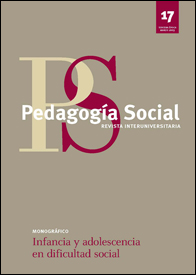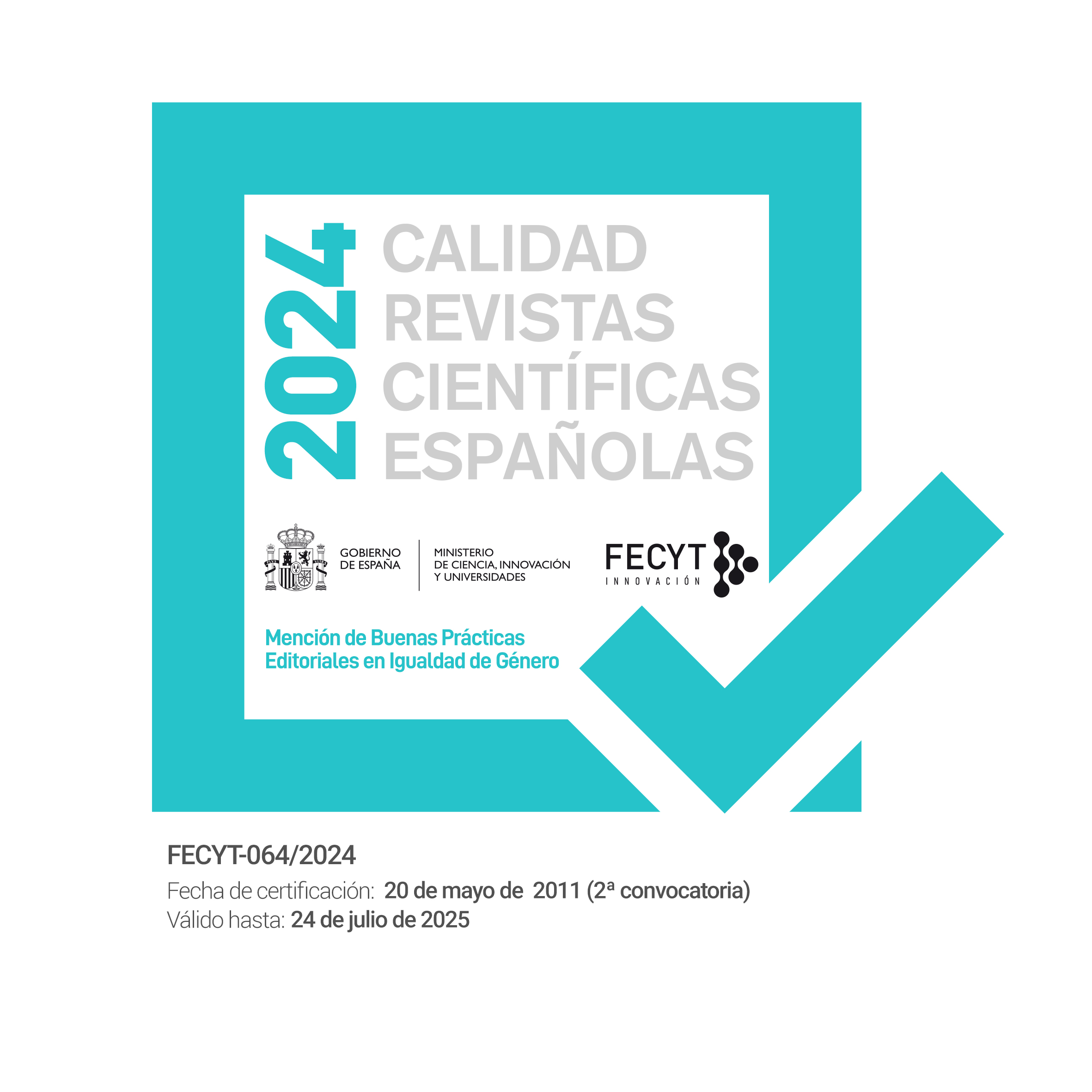Sociedad, infancia y adolescencia, ¿de quién es la dificultad?
DOI:
https://doi.org/10.7179/PSRI_2010.17.03Palabras clave:
Infancia, Adolescencia, Niños, Riesgo, Sociedad, Instituciones, Control, Childhood, adolescence, children, risk, society, institutions, controlResumen
Este artículo pretende ser una invitación a un viaje en el que no se den por hechas las seguridades compartidas acerca de la realidad de los niños y adolescentes de hoy, sino que se pongan en cuestión, buscando para ello otras explicaciones alternativas, que nos habiliten para abordar el estudio de las vidas de los niños, o las intervenciones con niños (sean ellos o nosotros quienes nos encontremos en dificultad) con una mirada distinta. En primer lugar se analiza el proceso de construcción social del propio concepto de “infancia y adolescencia en dificultad”, a la luz de los cambios que se han producido, especialmente a lo largo del último siglo, en las ciencias sociales y su repercusión en la formación de una idea de infancia en el imaginario colectivo. En segundo término, se aborda la condición de ser niño o adolescente en la llamada “sociedad del riesgo”, caracterizada, entre otras cosas, por la incertidumbre y los deseos de alcanzar un cierto control sobre los peligros percibidos como potenciales. La percepción de los riesgos para la infancia en la sociedad tiene dos caras: por un lado los peligros a los que están expuestos y por otro aquellos que causan, esto es, lo que nos amenaza. Para conjurar estos riesgos se exige mayor control por parte de las instituciones que regulan la vida de los niños (la familia, la escuela o el sistema de protección). El resultado es una restricción de la autonomía de los niños, niñas y adolescentes, que contrasta con las expectativas de que, como “hijos de la modernidad”, sean capaces de elegir sus propios caminos de autorrealización.
-------------------------------------------------------------------
This article tries to be an invitation to a journey in which the shared safeties taken for granted on the reality of the children and today teenagers, are being put in question, looking for other alternative explanations, which enable us to approach the study of the lives of the children, or the interventions with children (be they or we who meet in difficulty) with a different look. First it is analyzed the process of social construction of the proper concept of "childhood and adolescence in difficulty", in the light of the changes that have taken place, specially throughout last century, in the social sciences and its repercussion in the social images of childhood. In the second term, it is approached the condition to be child or teenager in so called "risk society", characterized, among other things, by the uncertainty and the desires to reach a certain control on the dangers perceived as potentials. The perception of the risks for the childhood in the society has two faces: on the one hand the dangers to those who are exposed and for other one those that they cause, which threatens us. To conspire these risks it is required major control on the part of the institutions that regulate the life of the children (the family, the school or the protection system). The result is a restriction of the autonomy of the children and teenagers, which confront with the expectations of whom, as " children of the modernity ", are capable of choosing their own ways of self-realization.
Descargas
Descargas
Publicado
Cómo citar
Número
Sección
Licencia
Derechos de autor 2014 Pedagogía social. Revista interuniversitaria

Esta obra está bajo una licencia Creative Commons Reconocimiento-NoComercial 3.0 Unported.
Derechos de reproducción y archivo
La versión publicada de los artículos podrá ser autoarchivada por sus autores en repositorios institucionales y temáticos de acceso abierto. No obstante la reutilización total o parcial de los mismos en nuevos trabajos o publicaciones deberá ser autorizada por Pedagogía Social. Revista Interuniversitaria.
Los trabajos publicados deberán ser citados incluyendo el título de la Revista, Pedagogía Social. Revista Interuniversitaria, nº, páginas y año de publicación.
Responsabilidades éticas
Pedagogía Social. Revista Interuniversitaria no acepta material publicado anteriormente en otros documentos. Los/as autores/as son responsables de obtener los permisos oportunos para reproducir parcialmente material de otras publicaciones y citar correctamente su procedencia. Estos permisos deben solicitarse tanto al autor/a como a la editorial que ha publicado dicho material.
Es obligación de Pedagogía Social. Revista Interuniversitaria detectar y denunciar prácticas fraudulentas.
En la lista de autores/as firmantes deben figurar únicamente aquellas personas que han contribuido intelectualmente al desarrollo del trabajo.
La revista espera que los/as autores/as declaren cualquier asociación comercial que pueda suponer un conflicto de intereses en conexión con el artículo remitido.
Los autores deben mencionar en el manuscrito, preferentemente en el apartado del método, que los procedimientos utilizados en los muestreos y controles han sido realizados tras la obtención de consentimiento informado.
La revista no utilizará ninguno de los trabajos recibidos con otro fin que no sea el de los objetivos descritos en estas normas.
Aviso de derechos de autor/a
© Pedagogía Social. Revista Interuniversitaria. Los originales publicados en las ediciones impresa y electrónica de esta Revista son propiedad del Pedagogía Social. Revista Interuniversitaria, siendo necesario citar la procedencia en cualquier reproducción parcial o total.
Salvo indicación contraria, todos los contenidos de la edición electrónica se distribuyen bajo una licencia de uso y distribución “Creative Commons Reconocimiento-No Comercial 3.0 España” (CC-by-nc). Puede consultar desde aquí la versión informativa y el texto legal de la licencia. Esta circunstancia ha de hacerse constar expresamente de esta forma cuando sea necesario.






